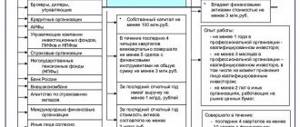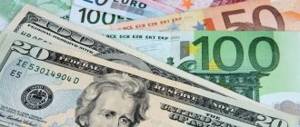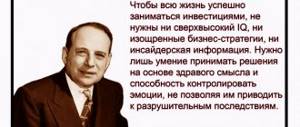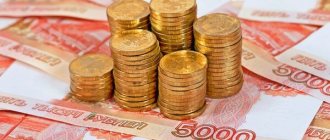The value of investments and the income from them may fall as well as rise, and investors may receive less than they invest.
When you want to invest in stocks or bonds, you may want to consider putting your money into one or more managed funds. Managed funds are pooled investments that hold dozens of different securities, so you reduce the risk of holding multiple individual stocks or bonds.
You can find funds that invest in a wide range of markets and sectors.
But wherever you invest, your fund managers take one of two main approaches to managing your money: active or passive investing.
It is important to understand the difference before discussing the choice of a fund or combination of funds with your financial advisor. This way, you can create an investment portfolio that truly reflects your individual investment goals.
This guide will help you understand how each investment approach works.
This guide has been prepared for educational purposes only and should not be construed as a substitute for investment advice. Vanguard Asset Management, Limited provides information about products and services only and does not provide investment advice based on individual circumstances. If you have any questions or the suitability or appropriateness of the products described in this document for you, please contact your financial advisor.
The goal of an actively managed fund is to outperform a specific market index (a sample of stocks or bonds chosen to represent a specific portion of the market) or some other specified benchmark.
Fund managers who take an active investment approach seek to either outperform a given stock or bond market, often represented by an index, or achieve a specific investment goal.
They strive to do this by using their knowledge and skills to analyze the market. They then buy stocks that they believe are currently undervalued and therefore have the potential to rise in price or pay higher dividends - over time. This process is known as stock - picking .
Managers can also adjust their portfolios to minimize potential losses. For example, they may avoid individual stocks or bonds, sectors, industries, or even countries that they believe are likely to underperform over a given period of time.
Different Styles – Cost and Height
Active fund managers use different investing styles.
Value investing managers seek to buy companies whose shares are currently trading for less than their net asset value (their total value after subtracting any debts and other liabilities) or if they believe the future earnings potential has been undervalued.
Managers committed to investing in growth stocks look for companies that have exceptional potential for growth and increase their share price over the long term.
Active and passive investor
There are nuances in the field of investing. The trader needs to decide in the direction of what to move. First, I'll go through the different types of investing:
- Passive investor. He invests for the long term, avoids trying to beat the market, and operates on a "buy and hold" basis. The positive side of this method of investing is a stable income, ideally for life.
Principles of active investing
I will highlight three main points:
- You can open trades only after in-depth analysis. It is important to have an understanding of the internal events of the organization and its multipliers.
- An active investor is engaged in constant monitoring to be able to successfully beat the market and get the maximum profit from each transaction.
- At any time, an active investor can reduce the number of active transactions in favor of longer-term deposits, just like a passive one.
Constant payments into investments
One of the effective tactics of passive investing is constant periodic payments to purchase a particular asset. Such contributions allow you to smooth out fluctuations in asset prices and obtain a more favorable average price than when purchasing an asset at the moment. This tactic is especially effective in a falling market: we do not know where the bottom of the market will be, but by gradually buying an asset, we average the price of entry into it.
When the asset price turns upward, the profit from the investment will begin to grow. This tactic will allow you to avoid the psychologically difficult decision to enter into an asset that is falling in price, but has prospects for growth in the future.
[my_custom_ad_shortcode3]
Working methods of an active investor
For profitable trades, an active investor should consider several aspects when monitoring. I will highlight 6, the first three are the basic factors that all traders need:
- Growth prospects.
- The company is undervalued by multiples. There are more than one or two pairs of such multiples, so a little later I will talk about one of them - P/E.
- Amount and frequency of dividend payments.
- Corporate events.
- Changes in reporting.
- Industry events.
I'll tell you more about each one.
P/E is the most important multiplier for an active investor
P/E, or Price/Earnings (in Russian “Price/Profit”) is a multiplier showing the undervaluation or overvaluation of shares. Imagine that you are buying an entire enterprise.
The price is the amount you pay for the company, and the profit is the income you receive from the purchase.
Thus, the P/E ratio shows how long it will take for your investment to pay off. By calculating this parameter, you determine whether the price of the securities is fair at the moment and whether it is profitable to buy them.
This indicator is calculated as follows:
P/E = Price/EPS = Share price/earnings per share, where
- Share price. The indicator can be taken from stock exchange quotes.
- Profit per 1 share. This parameter is included in each company’s financial statements (under IFRS) as a separate line.
The average P/P indicator for Russian companies is about 8, for American companies it is 25, and the lower the indicator, the better. This would mean that the stock is priced below its fair value and there is room for growth in the future.
Most often, an active investor has enough to make the initial and final decision about the need to sell or buy this instrument. Let me summarize: high P/P – sell securities, low – buy.
Corporate events
Let me give you an example. The company is planning a large project with high risks and high costs - the shares will no longer be attractive for investors. In the case of promising projects, the situation is the opposite.
Changes in reporting
Although a decrease in the profitability of an organization is normal, for active investors this is a reason to start a wave of divestment of shares.
Industry events
The price of securities may be influenced by the external environment. For example, for importers these are exchange rates, for mining companies - prices for raw materials.
Summary
As a result of all these actions, you will have a portfolio of shares of the most stable companies. As a result, we will receive market average returns, which even professional managers sometimes cannot beat. And don’t forget that managers also take a good commission from your deposit. Do you need it? If you give money to a manager, you will most likely receive a return that is lower than the market average, and you will also give this parasite a management fee. Don’t believe those who say that investing is very difficult and unclear. No, that's not true. This myth is created precisely by managers of various investment funds, so that they can then profit from your money. Passive investing really works wonders. Many famous investors have become rich through passive investing rather than speculative trading.
How to create an investment portfolio
An investment portfolio is a collection of bonds, deposits, etc., owned by one person. If you want to invest, then determine how you would like your portfolio to be consistent with your strategy. There are three types of strategies:
- Conservative. When filling a portfolio, the investor chooses exclusively liquid assets with the lowest risk. This strategy brings the least amount of income – 2–4% per annum.
- Aggressive. In this case, the investor invests money in undervalued organizations that may skyrocket in value in the future. The risks are high, but a competent approach to searching for assets can justify them. The return is just over 8%.
- Moderate. The investor is as careful as possible with the choice of assets, but if the risk is justified, he is ready for active action. Income – 4–8%.
Please note that it is wise to spread your investment across multiple assets. For example, if you have invested a certain amount in one company, then if the share price falls by 25%, your asset will lose the same amount in value. But if its share in your portfolio is 5%, the loss will be insignificant.
Tenure period
A passive investor expects the asset to be held for at least 3 years, ideally 5–10.
Important Definitions
Let's consider some important points when compiling and working with a portfolio.
Passive and active investments
Passive concept
investing involves diversifying investments to balance risks and following the broad market. Obtaining high returns much higher than the main stock indices is difficult. In this case, they buy ETF (ExchangeTradeFunds) or mutual funds for long-term holding, and make other investments in investment funds.
ETF
Let's remember that ETFs are exchange-traded funds that invest in specific assets or their classes. They issue securities for the underlying assets (bonds, stocks, futures, foreign currencies) that they own. A change in the value of these instruments leads to a change in the price of ETF securities, which ideally should repeat the dynamics of the investment portfolio.
Active investing
consists of selecting a list of individual financial instruments for your portfolio. The process of opening and closing positions, known as “rebalancing,” occurs much more frequently with this approach. Opening shorts is allowed. Active investing is an expensive operation in terms of commission and time, but with high returns. Remember! This is not speculation, but working with your list of assets, which can be both short-term and long-term.
A mixed approach is also acceptable
, in which one part of the funds is invested in stock indices, and the other in promising securities.
Liquidity
Liquidity is the ability of assets to quickly turn into cash.
The level of liquidity of assets is determined by their rate of exchange for money. The most liquid (with absolute liquidity) is money, since it can be immediately used for settlements. Why is it important to consider this when investing?
Highly liquid financial instruments, due to high demand, have a lower risk of loss than low-liquidity and illiquid ones. Compare how much easier it is to sell a stock that is actively trading on the market and an apartment. If you need to do this as quickly as possible, you will have to “make a discount” on the apartment. And you can sell even 1000 of these shares quite quickly and with minimal losses on the stock exchange.
The ability to quickly sell an object allows you to recoup your investment and minimize costs in the amount of the difference in the purchase and sale prices. This is especially true in the context of economic and political changes affecting the global market.
In conditions of macroeconomic instability, for effective management of personal finances, it is recommended to create a flexible portfolio that can be changed at any time. These are mainly liquid funds (stocks, bonds, real estate), from which you can exit no later than 2 weeks from the date of submitting an exit application.
Liquidity in the stock market
assessed by such parameters as trading volume (turnover), the number of orders in the trading order book, spread (the difference between current purchase and sale prices).
Trading volume
represents concluded transactions in monetary terms included in the current trading session.
Spread
is the difference between the purchase and sale prices of an asset, presented in the order book.
The order book
is the number of securities offered for sale at a specific price.
Sberbank share price chart (MCX: SBER)
For example, in the order book of Sberbank shares the spread is 7 kopecks or 0.03% of the market price, and the Don Radio Components Plant (DZRD) is 30 rubles. or 0.98%. At the same time, the trading volume of BEAC is several times higher than the DZRD. The difference in liquidity is obvious.
The easiest way to determine liquid assets is to filter them by daily turnover. The most liquid – with the largest volume. Depth of price is also taken into account. For example, 6,000 shares of Sberbank are sold at 220 rubles. – 1.32 million rubles. If an investor decides to invest 100 thousand rubles, then the transaction will take place at the same price. When investing 100 thousand rubles. in the DZRD, you will need to collect applications up to a cost of 2,600 rubles, that is, buy back securities at a price higher than the market price by more than 2.5%.
Active Investor Strategies
I don’t see much point in listing them all; I’ll tell you about the most popular ones. And it’s up to you to choose who suits one or the other.
Profitable
This strategy falls into the moderate risk category. An investor is careful when choosing stocks, so entering a transaction is possible only after a fundamental analysis of the market and the company. With this strategy, it is worth investing in the long term.
Profitability will consist of dividend income (5–10%) and due to the growth of the stock market (10% per year).
Cost
The basis is the purchase of undervalued companies with growth potential: the risks in this case are higher. With this strategy, the active investor focuses on what price should be reached to exit the trade.
The method works in the short term, since the stock can be revalued quite quickly.
Growth strategy
The investor buys shares that are already overvalued by the market, but with the prospect of further growth.
The risks are higher because there is a high probability of such assets falling, so it is important to exit the transaction in time.
Short-term speculation
The most risky and unprofitable strategy, since the duration of the transaction is only a few minutes, and the likelihood of regular success is very low.
Small disclaimer
Let me make a reservation right away: there are no strict boundaries between trading and investing. At some points in his activity, an investor behaves like a typical trader, buying assets cheaper and selling them more expensive. And a trader who opens long positions for weeks or even months is essentially thinking ahead - just like an investor.
Therefore, further reflections concern “pure” traders and investors, such abstract market participants in a vacuum. In fact, trading and investing are two sides of the same coin, and without one you cannot have the other.
But enough of the lyrics - let's move on to specifics.
Passive Investment Strategies
There are few options here, but there is still a certain freedom of choice.
Buy and keep
The bottom line is that the investor holds the deposit for a long period of time and, during strong price declines, does not rush to get rid of assets, but keeps them in his investment portfolio.
Perhaps this approach seems unreasonable, but consider: the world is growing and developing, humanity is growing, the volume of production of goods and the turnover of companies are increasing. And if the shares of one of them fall by 30%, then in a year or two their value may increase significantly compared to their current value.
Trust management
The principle is this: the investor gives money to an authorized person, and he handles the financial issues of investing in his place. There are collective and individual trust management.
In a collective case, you give money to a management organization, as do hundreds of other people collaborating with it, and it decides where to invest this money. You do not take any part in the distribution of your own funds, but this is convenient: the risks of losing money are reduced, since the funds are invested in hundreds, or even thousands of companies at the same time.
In the case of an individual trust, you enter into an agreement to manage your funds with an authorized person, and he, in accordance with your approach, chooses where to invest. When paying dividends, the manager will receive a reward, but will save your time.
Tracking Index Trackers
Here are some examples of market indexes that many passive funds follow.
FTSE
The FTSE Group is wholly owned by the London Stock Exchange. The group is a global leader in the creation and management of equity, bond and alternative asset indices. The renowned FTSE 100 index tracks the 100 best UK companies.
www.ftse.com
S&P Dow Jones
The S&P Dow Jones Indices have more than 115 years of index construction experience. It is the home of iconic American indices such as the S&P 500 and Dow Jones Industrial Average, as well as many other market indicators around the world.
www.spindices.com
MSCI
MSCI offers a range of indices with a focus on equities. MSCI All Countries World Index is one of the world's most famous stock indices.
www.msci.com
Barclays Capital
Barclays Capital, also known as "BarCap", is a major provider of bond indices to investors around the world.
The Barclays Global Aggregate Index is a widely used measure of global bond markets.
www.index.barcap.com
Pros and cons of passive and active investing
Active investor | Passive investor | |||
pros | Minuses | pros | Minuses | |
| Great profitability. | High risks of loss of assets and losses even with proper management. | Lower risks with stable income over a long period. | Longer periods of income generation and lower profits. | |
| Profit in a short time (transaction duration from several minutes to several weeks). | Active investing takes the investor a lot of time to monitor the market (5-9 hours a day). | The investor spends a minimum of time working with the investment portfolio. | ||
"Axioms" that don't work
There are statements that have been ingrained in our heads since childhood. Let's remember some of these "axioms":
Without a higher education diploma, no one needs you.
All rich people are scammers.
We need to invest in children, in apartments, in cars.
If you work hard, you can become a big boss and earn big money.
If you don't have the latest model iPhone, you're a loser.
If you still rent an apartment, you are doubly a loser.
You need to get married before 25, otherwise it will be too late later, etc.
I think you can always add your own “axioms” to this list.
So, what am I talking about? Well, yes, about “axioms”. In the financial market, the following axiom still circulates among the majority of stock market participants: “in order to make money in the financial market, you need to engage in active trading, instead of passive investing.”
Supply area
Any activity that is associated with the sale or storage of various goods brings high income. If a person is looking for which job is best for him to earn a lot of money, it is worth paying attention to the available vacancies for storekeepers and salespeople. Store employees usually have some privileges. For example, they buy without a markup any goods that arrive at warehouses, thanks to which they can significantly save the budget.
There are other professions in which you can earn a lot. Nowadays, good salaries are offered to managers, lawyers and economists. To get such a profession, you need to study at a university, and then master it in practice. In addition, you can try your hand at being a sales representative or sales manager.
Other people's services
If a person knows how to sell goods and services, you can try to become an intermediary, receiving your commissions. This is the easiest way to earn one thousand rubles per hour without any investment. You can sell other people's services along with information products through affiliate programs. This type of business can be done online or offline. For online activities, it is advisable to have a group on social networks. If this is not possible, then you should post links on forums and get paid for it.
Carrying out various tasks
Modern people, as a rule, are very busy at work, and therefore they simply do not have enough time to do everyday household work, for example, take out the garbage or go shopping. This is another answer to the question of how you can make money. By completing such small tasks, you can also earn some income. This is an excellent option for where and how students can earn money while studying. You can find several regular clients, and then get to work. Usually the pay for completing small tasks is good, so over time a person can accumulate a small capital, and then open his own business.
Resale of websites
Recently, many people often ask the question of how you can earn a lot of money in a short time. The easiest way is to make money on the Internet. A person can create his own website, through which he will receive good income from advertising.
Another quite promising option is the resale of undervalued ready-made websites. This kind of business will bring good profits. To begin with, you should try to make money on your own blogs or Internet resources to gain experience. After a person understands the specifics of the sites’ activities, they can begin to resell them.
Profit management
Investment portfolio management is not limited to selecting objects; this process also involves profit management. Investors, at their discretion, dispose of the income received from deposits, as a rule, for the purposes of:
- Reinvestment (investment in new objects)
- Formation of a financial cushion
- Own remuneration (personal income)
Reinvestment allows you to increase capital in the future. Thus, American and European pension funds completely reinvest the money. Employees of US companies are offered to put money into a pension fund with the right to choose an investment object. Over 20-30 years of work, by the time people retire, they have formed a large capital that works for itself.
You can calculate how much you need to invest in such a fund in your case or put into a deposit every month so that after retirement you can live only on interest income.
This exercise, like many useful materials, is available only to authorized users.
Login
Therefore, pensioners from developed countries have a secure, comfortable life. If you invest $1000 at 6% per month over 3 years, you will accumulate an amount of $8146.71. Adidas shares are up 300% in the last 3 years, Amazon shares are up 200% in the last 2 years.
Exchange
This is the most popular option, allowing you to earn a large amount without putting in much effort. Many people, thinking about how much they can earn from stocks, believe that playing on the stock exchange is a common deception. But there are people who do not even doubt that if you believe in your luck, you can make a decent profit without any problems. If a person decides to make money by playing on the stock exchange, he should remember that this is associated with risks. Therefore, before investing your money, you need to learn how to place bets by selling shares on time.
Medical services
When choosing an educational institution, future students are often interested in what profession they will be able to earn a lot from in the future. Recently, quite a large number of private clinics have been opening in the country, which are constantly in need of good doctors with nurses and other medical personnel. Such specialists are widely in demand on the labor market in absolutely any economic conditions. In order to get a decent salary, you can find a job in a non-governmental medical institution. You can also find a good vacancy in a laboratory, clinic or scientific institute.











